Project 3 - Face Morphing
Filip Malm-Bägén
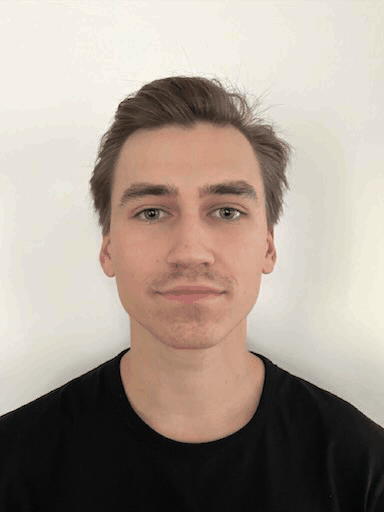
Introduction
This project goes though into the techniques of seamlessly transitioning between two images by manipulating the mesh of corresponding points and blending the colors. By performing these operations, it is possible to compute the average face of a group and create caricatures derived from this average face.
Defining Correspondences
Approach
The corresponding points between two images were defined thoguh this tool. I visualized these points on both faces using OpenCV. Then, I calculated the average positions to create a midway shape and applied Delaunay triangulation to these points. This triangulation will guide the smooth transition during the morphing process.
Result
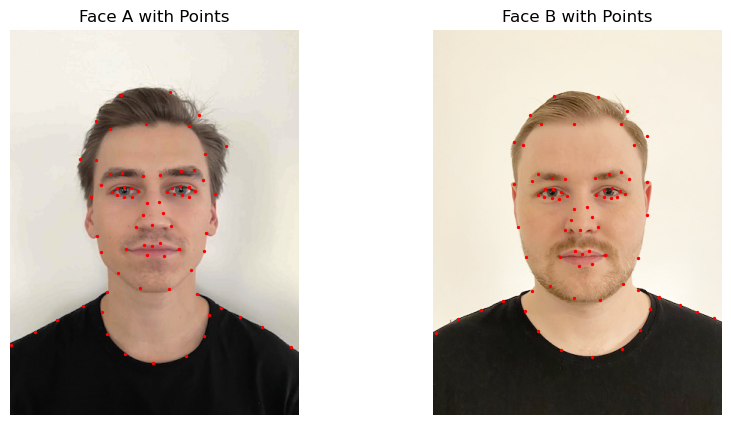
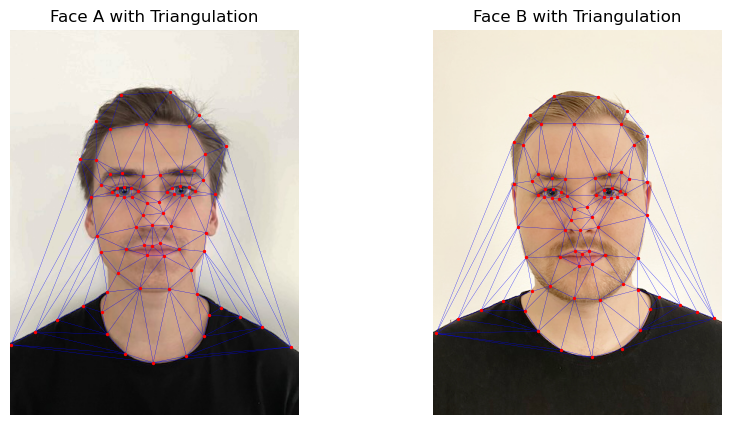
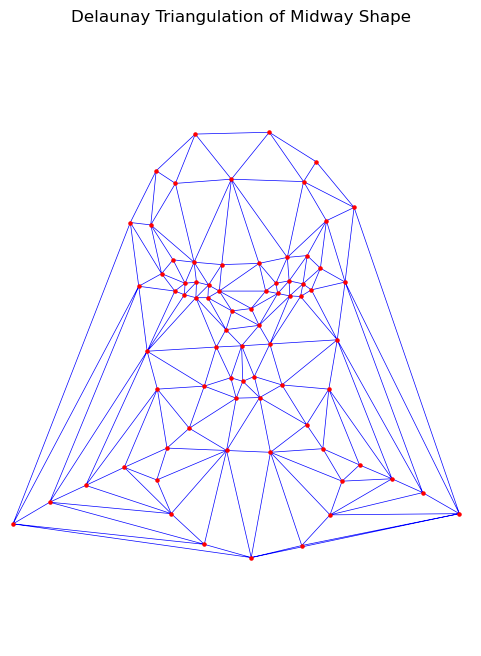
Computing the "Mid-way Face"
To compute the "mid-way face", I follow three steps: (1) computing the average shape, (2) warping both faces to that shape, and (3) averaging the warped images' colors.
Approach
Step 1: Computing the Average Shape
The average shape is calculated by taking the element-wise mean of
the keypoints from both images:
avg_points = (points_a + points_b) / 2. I thereafter
applied Delaunay triangulation using the average points to create
triangles for warping.
Step 2: Warping the Faces
For each triangle, we compute an affine transformation matrix
between corresponding triangles in both faces and the average shape:
A = compute_affine(tri_a, tri_avg). Using inverse
warping, we map the pixels from the source image triangles to the
average shape. This is applied to both images, creating warped
versions warped_a and warped_b.
Step 3: Averaging Colors
Finally, the mid-way face was computed by averaging the warped
images: midway_face = (warped_a + warped_b) / 2. This
produces a blended face that combines both images' geometry and
color.
As seen in the result, there is a slight error in the mid-way face, especially around the hair and shoulders. I think this might be due to the points I selected not being perfectly positioned. If one zooms in, there are artifacts around the face, and a horizontal line across the nose.
Result
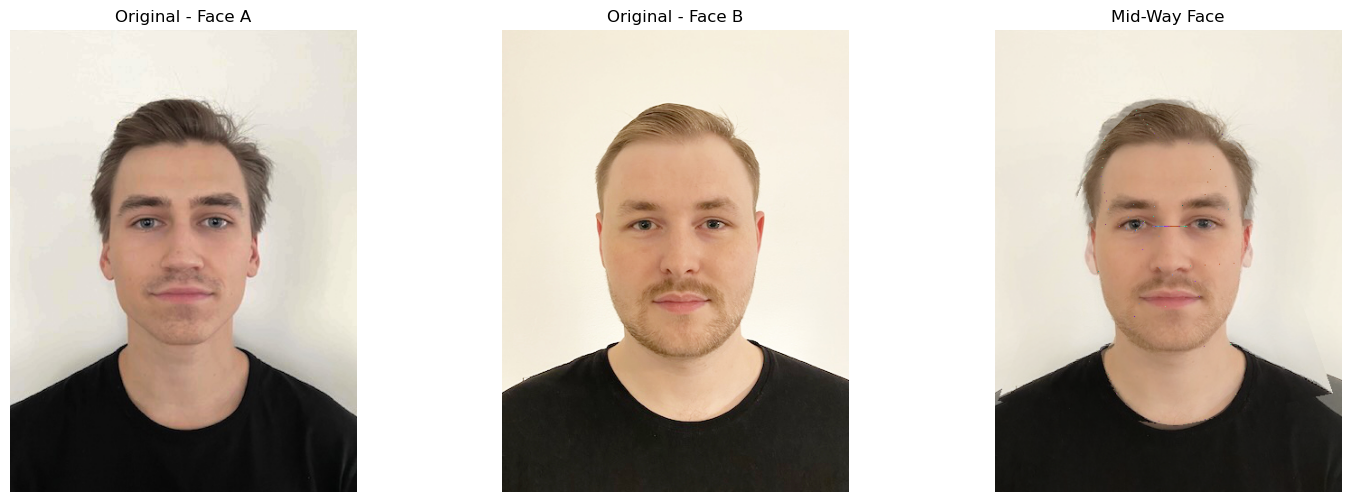
The Morph Sequence
Approach
The morphing process involves two main components: shape warping and cross-dissolving. For each frame in the sequence, both images are warped to an intermediate shape defined by a warp_frac parameter, which linearly increases from 0 to 1 over the course of the video. The warping is achieved by applying affine transformations to corresponding triangles from the Delaunay triangulation of the average shape. After warping, the color values of the warped images are cross-dissolved using a weighted average based on dissolve_frac, which also linearly increases from 0 to 1. The final frame is produced by blending the morphed face with the background.
Result
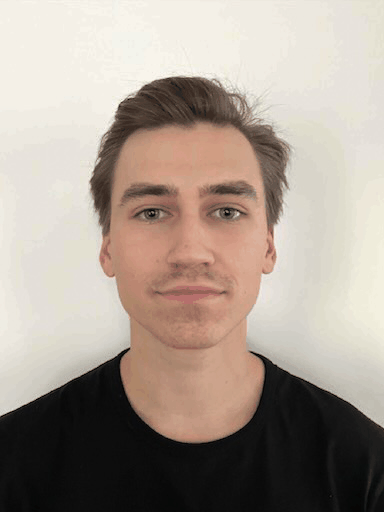
The "Mean face" of a population
Approach
For this task i used the IMM Face Database. The code works by
loading the facial images and their landmark points into
images and landmarks, normalizing the
landmarks to the image dimensions. It computes the average shape
average_shape, then uses Delaunay triangulation and
affine transformations to morph each image towards this average.
Finally, it combines the morphed images to create and display an
average male face with a neutral expression.
Result

Here are a few examples of faces in the dataset warped to fit the average face. The result looks somewhat good, but there are still some artifacts around the eyes and mouth.

Part 5. Caricatures: Extrapolating from the mean
Approach
To create the caricature, I started by collecting and averaging the
landmarks of female happy faces using load_images_and_landmarks and
compute_average_shape. After normalizing these landmarks, I created
a caricature of my face by exaggerating the difference between my
landmarks and the average using the formula
caricature = scale * me + (1 - scale) * avg. Finally, I
warped my face to fit these caricatured landmarks with
morph_to_average_shape and displayed the result.
Result
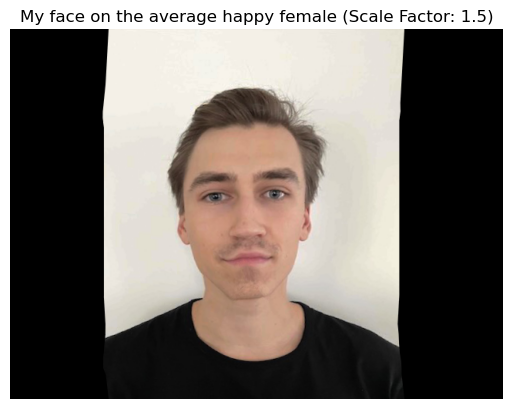
Bells and Whistles
I created a morph-video-chain of my friends in Sweden. To to this, I used the tool to define the corresponding points between each image in a sequence, so i first tagged face_a with face_b, then face_b with face_c, and so on. I then used the same approach as in the previous sections to create the morphing sequence. The result is a fun video of my friends morphing into each other. The result is fun, but it is not great. I used images a had laying around, which resulted in some bad morphs. The morphing is not very smooth, and the faces are not perfectly aligned. It would have been much better if I used better images, or aligned the faces better.
It is also clear on which images I've been sloppy with the correspondance points. On these morphings, the faces are not perfectly aligned, and the morphing is not smooth. I should have placed a lot more points, especially around the contour of the face. On some transitions, it just looks like the faces are sliding around.

This webpage design was partly made using generative AI models.